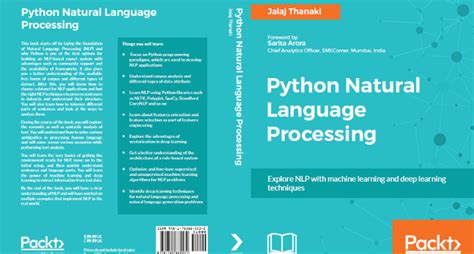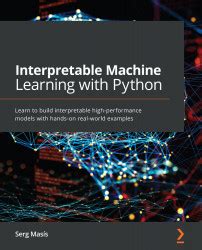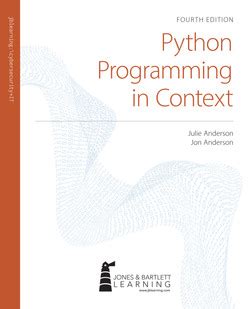Machine learning is rapidly transforming the educational landscape, providing educators with powerful tools to enhance learning outcomes. Scikit-Learn, a robust Python library, stands at the forefront of this revolution, offering a versatile toolkit for educators to implement machine learning models with ease. This essential guide is designed to help educators unlock the full potential of Scikit-Learn, from installation and setup to advanced techniques. Whether you’re new to machine learning or looking to deepen your expertise, this guide will provide you with the foundational knowledge and practical insights needed to effectively integrate Scikit-Learn into your teaching practice, making complex concepts more accessible to students.
Let’s explore this topic in detail with electrapk.com
1. Introduction to Scikit-Learn
Scikit-Learn is an open-source Python library widely recognized as a fundamental tool for implementing machine learning algorithms. Its user-friendly and efficient approach to data analysis and modeling makes it a valuable asset for educators seeking to integrate machine learning concepts into their curriculum. Built upon the foundations of popular Python libraries like NumPy, SciPy, and matplotlib, Scikit-Learn seamlessly integrates with other commonly used data science tools, enhancing its overall utility.
Scikit-Learn’s ease of use is a major advantage. The library provides a consistent interface for various machine learning algorithms, ranging from basic linear models to sophisticated ensemble methods. This simplicity enables educators to emphasize the core principles of machine learning without getting entangled in the intricacies of implementation.
Scikit-Learn’s extensive documentation and robust community support provide educators with a wealth of resources, tutorials, and examples. The library’s versatility allows it to be implemented in diverse educational contexts, ranging from introductory courses to advanced machine learning classes. By integrating Scikit-Learn into their teaching, educators can equip students with practical machine learning experience, thereby preparing them for careers in data science and artificial intelligence.

2. Installation and Setup
Getting started with Scikit-Learn is straightforward, making it accessible for educators and students alike. To begin, you’ll need to install Python, as Scikit-Learn is a Python library. Python can be downloaded from the official website, and it’s recommended to use a version from Python 3.7 to 3.10 for compatibility with Scikit-Learn.
Once Python is installed, Scikit-Learn can be easily installed using pip, Python’s package manager. Simply open your command line or terminal and type:
bash
Copy code
pip install scikit-learn
This command will automatically download and install Scikit-Learn along with its dependencies, such as NumPy and SciPy.
For educators who prefer a ready-to-use environment, Anaconda is an excellent option. It’s a distribution that includes Python, Scikit-Learn, and other essential libraries pre-installed. Anaconda also provides Jupyter Notebooks, an interactive tool for teaching and learning that’s ideal for running Scikit-Learn examples.
With Scikit-Learn installed, you’re ready to start exploring its features and integrating machine learning into your teaching.

3. Key Features and Benefits
Scikit-Learn offers a range of key features that make it an indispensable tool for educators in the field of machine learning. One of its most significant advantages is its user-friendly interface, which provides a consistent API across various algorithms, simplifying the learning curve for both educators and students. This uniformity allows users to easily switch between different machine learning models without needing to learn new syntax.
Another major benefit is Scikit-Learn’s comprehensive selection of algorithms. It includes everything from basic classification and regression models to more advanced techniques like clustering, dimensionality reduction, and ensemble methods. This variety enables educators to cover a broad spectrum of machine learning topics using a single library.
Additionally, Scikit-Learn is highly efficient, designed to work seamlessly with NumPy arrays and handle large datasets with ease. Its integration with other Python libraries, such as pandas and matplotlib, enhances its functionality for data preprocessing, analysis, and visualization. These features make Scikit-Learn a powerful and versatile tool for enhancing machine learning education.

4. Basic Concepts and Terminologies
Mastering Machine Learning with Scikit-Learn: A Foundation in Concepts and Terminology
A solid understanding of Scikit-Learn’s fundamental concepts and terminology is crucial for both teaching and applying machine learning effectively. At the heart of Scikit-Learn lie datasets, which serve as the foundation for training and evaluating machine learning models. These datasets are composed of two key components: features and labels. Features, also known as input variables, provide the data used to predict the labels, which represent the desired output variables.
In Scikit-Learn, a model embodies a machine learning algorithm that has learned from a dataset. This learning process, called training, involves fitting the model to the data, allowing it to make predictions on previously unseen data. Two core aspects of models are training and prediction. Training entails using a dataset to fine-tune the model’s parameters, while prediction involves leveraging the trained model to generate outputs based on new input data.
Another key concept is validation, which refers to assessing the model’s performance using a separate dataset, often called a validation or test set. This helps in evaluating how well the model generalizes to new data. Understanding these basic concepts and terminologies is crucial for navigating Scikit-Learn and machine learning as a whole.
5. Data Preprocessing Techniques
Data preprocessing is a critical step in the machine learning workflow, as it ensures that the data is clean, well-structured, and suitable for modeling. Scikit-Learn provides a variety of tools to help educators teach these essential techniques.
One of the most common preprocessing tasks is data scaling, which involves adjusting the range of features so they are consistent. This is particularly important for algorithms that rely on distance calculations, like k-nearest neighbors and support vector machines. Scikit-Learn offers StandardScaler and MinMaxScaler for this purpose.
Another vital technique is data encoding, which is used to convert categorical variables into numerical format. Scikit-Learn’s OneHotEncoder and LabelEncoder are commonly used for this task, making it easier to work with non-numeric data.
Missing data handling is another essential preprocessing step. Scikit-Learn provides the SimpleImputer class to replace missing values with the mean, median, or a constant value, ensuring that the dataset remains complete.
Finally, feature selection helps in reducing the dimensionality of the dataset by keeping only the most relevant features. Scikit-Learn offers several methods, such as SelectKBest and Recursive Feature Elimination (RFE), to streamline this process.
These preprocessing techniques are fundamental for preparing data, making Scikit-Learn an invaluable resource for educators teaching machine learning.
6. Building and Training Machine Learning Models
Scikit-Learn’s user-friendly design makes it an ideal tool for teaching machine learning. The process starts by choosing an appropriate model from its vast library, which includes options like linear regression, decision trees, and support vector machines. Each model utilizes a standardized API, simplifying the task of training the model on the provided data.
Model training involves first separating your dataset into features (input variables) and labels (output variables). To evaluate the model’s performance, the data can be further divided into training and testing sets using the `train_test_split` function. With the data prepared, you instantiate the model and invoke the `fit` method, providing the training data as arguments. This process allows the model to learn patterns and relationships within the data, adjusting its internal parameters accordingly.
Following training, the model’s performance is evaluated using test data. Scikit-Learn offers a range of metrics and tools to aid educators and students in analyzing the model’s ability to generalize to unseen data. This practical approach to model building and training promotes a deeper understanding and facilitates real-world applications.
7. Model Evaluation and Validation
Evaluating and validating machine learning models is essential for ensuring their performance on new, unseen data. Scikit-Learn offers a variety of tools and techniques to assess the effectiveness of these models.
A widely used technique is cross-validation, which entails dividing the dataset into several segments (folds). The model is then trained on various combinations of these segments. The `cross_val_score` function facilitates the evaluation of the model’s performance across these folds, resulting in a more reliable assessment of its ability to generalize to unseen data.
Evaluating the model’s performance is crucial. For regression models, common metrics include Mean Absolute Error (MAE), Mean Squared Error (MSE), and R-squared score. Scikit-Learn provides convenient functions for calculating these metrics: `mean_absolute_error`, `mean_squared_error`, and `r2_score`.
For classification models, metrics such as accuracy, precision, recall, and F1-score are vital. Scikit-Learn provides accuracy_score, precision_score, recall_score, and f1_score for these evaluations. Additionally, confusion matrices can be visualized using the confusion_matrix function to understand the model’s performance across different classes.
Using these evaluation techniques ensures that educators and students can confidently assess and improve their machine learning models.
8. Practical Examples and Use Cases in Education
Scikit-Learn’s versatility makes it ideal for a variety of practical examples and use cases in education. One common application is student performance prediction, where educators use historical data to build models that predict future academic achievements. For instance, using regression algorithms, educators can identify factors that influence student grades and provide targeted interventions.
Another use case is classroom behavior analysis. By applying clustering techniques, educators can group students based on behavioral patterns and tailor classroom strategies to meet diverse needs. This helps in creating personalized learning experiences.
Text classification is another valuable application. Scikit-Learn can be used to develop models that categorize student essays or discussion posts into different topics, helping teachers quickly assess student understanding and engagement.
Additionally, Scikit-Learn can assist in educational resource recommendation systems. By analyzing student interaction data, models can recommend relevant resources and activities, enhancing the learning experience.
These practical applications of Scikit-Learn empower educators to leverage data-driven insights, improve educational outcomes, and foster a more effective learning environment.
9. Advanced Techniques and Tips for Educators
For educators looking to deepen their understanding of machine learning with Scikit-Learn, several advanced techniques and tips can enhance the learning experience and model performance.
Hyperparameter tuning is a crucial technique for optimizing model performance. Scikit-Learn’s GridSearchCV and RandomizedSearchCV functions allow educators to systematically explore different combinations of hyperparameters to find the best settings for their models. This process can significantly improve model accuracy and generalization.
Another advanced technique is feature engineering, which involves creating new features from existing data to better capture underlying patterns. Techniques such as polynomial features or interaction terms can enhance model performance by providing more informative inputs.
Ensemble methods like Random Forests and Gradient Boosting combine multiple models to improve prediction accuracy. Scikit-Learn offers implementations of these methods that can be particularly useful for handling complex datasets and improving results.
Model interpretability is also important. Tools like SHAP and LIME (Local Interpretable Model-agnostic Explanations) can help educators understand how models make decisions, which is valuable for explaining results and building trust in machine learning systems.
By incorporating these advanced techniques and tips, educators can enhance their teaching of machine learning and better equip students with the skills needed for data science careers.
10. Resources and Further Learning Materials
To deepen knowledge and expertise in Scikit-Learn and machine learning, several resources and further learning materials are invaluable for educators and students alike.
The Scikit-Learn official documentation is an essential resource, offering comprehensive guides, tutorials, and API references. It provides clear examples and explanations of various functions and algorithms, making it an excellent starting point for learning and troubleshooting.
Online courses and tutorials are also highly beneficial. Platforms such as Coursera, edX, and Udemy offer courses specifically focused on Scikit-Learn and machine learning, often featuring hands-on projects and real-world applications.
Books like “Introduction to Machine Learning with Python” by Andreas C. Müller and Sarah Guido provide in-depth coverage of Scikit-Learn and practical machine learning techniques. This book is particularly useful for understanding both the theoretical and practical aspects of machine learning.
Community forums and discussion groups, such as Stack Overflow and the Scikit-Learn mailing list, are great for seeking advice, sharing insights, and connecting with other educators and practitioners.
In conclusion, delving into GitHub repositories offers access to real-world examples and open-source projects that utilize Scikit-Learn. Interacting with these resources can introduce novel perspectives and inventive methods for instructing machine learning. Collectively, these materials facilitate continuous learning and the practical application of Scikit-Learn within educational settings.
Incorporating Scikit-Learn into educational settings empowers educators and students to explore and apply machine learning concepts effectively. From its easy installation and comprehensive features to practical applications and advanced techniques, Scikit-Learn offers a robust toolkit for enhancing learning experiences. By leveraging these resources and techniques, educators can provide valuable hands-on experience with machine learning, preparing students for future data science challenges and opportunities.
electrapk.com
